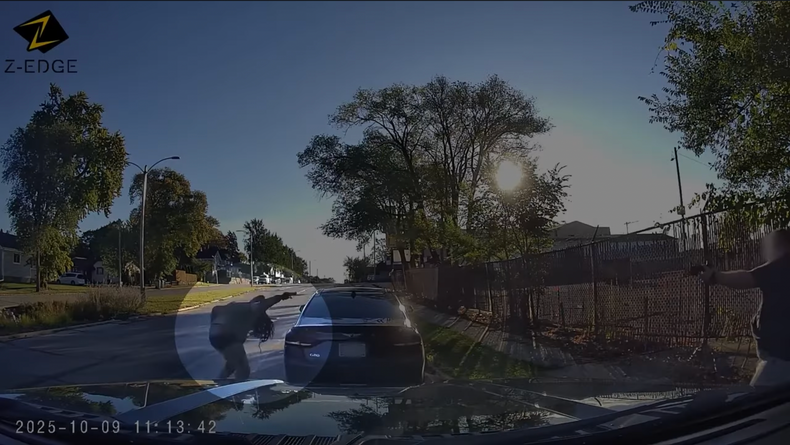Critical Home Defense Lessons - Using Cover, Getting Small, and Stacking the Odds
Location: Milwaukee (off-duty officer video — additional angle across the street)
Video Source: Humilitas First
How the Officer Turned a Dangerous Moment into a Controlled Ending
This clip shows an off-duty officer who uses the full length of his vehicle for cover and forces the aggressor into a zone of disadvantage — what the instructor calls “the deep.” Instead of slugging it out at close quarters, the officer manipulates distance, uses hard cover, and minimizes his visible profile until the fight is over.
That description may sound tactical, but the underlying lessons are simple and usable by anyone who thinks about safety: make yourself a difficult target, use available cover, and create visual and temporal friction so a violent attacker has to search for you. Those fractions of a second matter.
Clear, Practical Lessons
1) Use Cover — Not Just Concealment
The officer used his truck as cover (something that stops rounds), not merely concealment (something that hides you). Big, thick barriers such as vehicles, large trees, and concrete walls protect the parts of you you don’t expose. When under threat, position any available hard barrier between you and the threat before you expose yourself.
2) Get Small — Reduce What the Bad Guy Can See
“Get small” means show as little of yourself as possible: one eye, a sliver of shoulder, a forearm, and the muzzle if you’re engaged. The less they can see, the fewer places there are to hit. When you must move, break silhouette and keep your profile minimal.
3) Expand Distance When Possible
Most violent encounters favor whoever can control the distance. Increasing standoff distance reduces the attacker’s hit probability and gives you more time to assess and act. The officer deliberately let the engagement occur at 20–25 yards (roughly 60–75 feet) — a range where many aggressors shoot poorly.
4) Force the Attacker to Search — Stack the Odds
Move so you’re not where the bad guy last saw you. Force him to visually search; that search takes time — even a few tenths of a second can be decisive. Use funnels, blind corners, or the rear of a vehicle to make the attacker commit to an obvious path where you already control the advantage.
5) Move with Intent — Small, Deliberate Actions Win Time
When the officer needed to reposition, he did it while minimizing exposure. You don’t have to be Superman — be deliberate: tuck behind cover, reduce your visible surface, and move only when you have a tactical reason to do so.
Why Furniture Matters — Fast Access and Smart Concealment
The same principle of using cover and positioning applies to home defense. Preparedness isn’t just about what you carry—it’s about how you stage your environment. Having quick, controlled access to a defensive tool can make all the difference when seconds count.
That’s why TimberVaults designs furniture that blends concealment with readiness. This (Hidden gun shelf) isn’t just a piece of décor—it’s a hidden shelf safe built for real-world defense.
This drop down gun shelf combines a premium wood exterior with secure, RFID-activated access, allowing you to store a firearm or valuables in plain sight while keeping them instantly reachable. Its design mirrors the lessons of tactical awareness: stay discreet, stay protected, and control your environment.
Every TimberVault is engineered as a hidden gun shelf that merges design, durability, and practicality—because preparation shouldn’t clash with your home’s aesthetics.
Short Action Checklist (If You Carry or Prepare)
-
Survey transitional spaces — reduce time spent exposed.
-
If threatened, use the biggest, hardest barrier available.
-
Get small: minimize your profile.
-
Move to force the attacker to search — buy fractions of a second.
-
Train for movement, not just point-and-shoot.
Final Thought
This clip reinforces a basic truth: you don’t need heroic answers to survive—smart answers. Using cover, controlling distance, and limiting exposure stacks the odds in your favor. Preparation is more than gear; it’s practiced habits and small decisions made before the emergency arrives.




